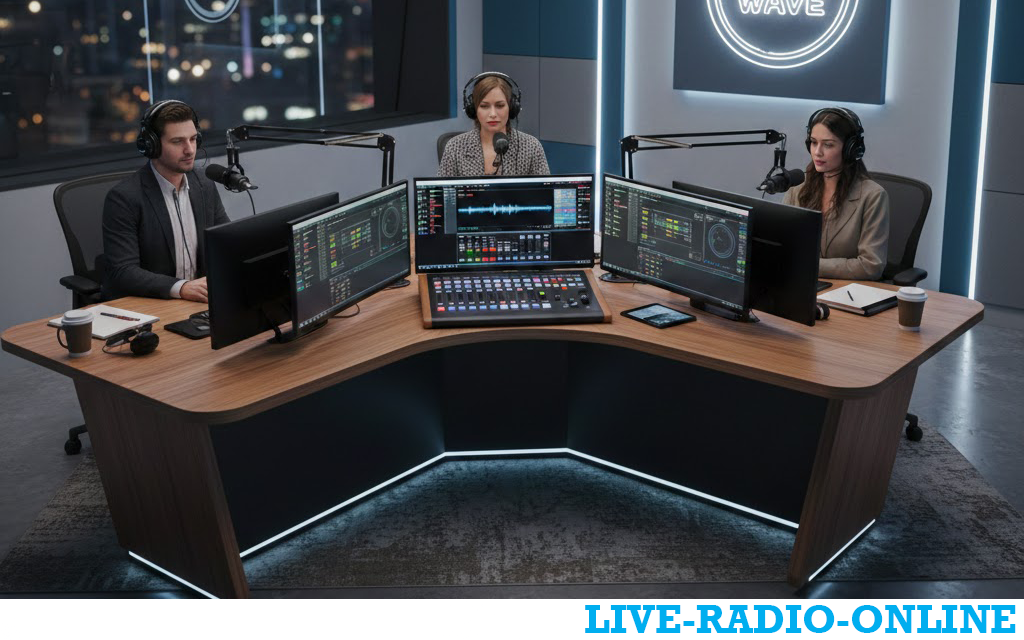
The radio industry is undergoing a fascinating transformation, moving far beyond the traditional "transmitter and tower" model. The latest innovations are all about interactivity, personalization, and multiplatform accessibility.
Here’s a breakdown of the key innovations shaping the future of radio stations:
1. The Rise of Hybrid & Digital-Only Stations
The very definition of a "radio station" is expanding.
-
Niche Digital Stations: Brands like iHeartRadio and Radio.com host thousands of digital-only stations catering to hyper-specific tastes (e.g., "90s Grunge," "Lo-Fi Beats," "K-Pop B-Sides"). There's no FM/AM equivalent.
-
Artist- & Brand-Curated Stations: Spotify and Apple Music have popularized algorithm-based playlists, and radio is following suit with human-curated stations by famous DJs, artists, or even brands.
-
Podcast Integration: Many traditional stations now broadcast their most popular shows as podcasts on-demand and are creating original podcast content to fill their digital streams.
2. Advanced Interactive & Visual Radio
Radio is no longer just an audio medium.
-
Video Studios: Stations are building state-of-the-art studios with live video streams of their shows on YouTube, Facebook, and their own apps. Listeners can watch the DJs, see guests, and view behind-the-scenes action.
-
Real-time Listener Interaction: Apps like Radioplayer in the UK and Canada allow listeners to interact directly from the streaming app: requesting songs, voting in polls, answering on-air questions, and even sending messages that scroll on a screen in the studio.
-
Social Media Integration: Shows are built around social media, with segments dedicated to listener tweets, Instagram stories, and TikTok clips. The conversation happens in real-time across multiple platforms.
3. Artificial Intelligence (AI) & Machine Learning
AI is becoming a powerful tool behind the scenes.
-
AI DJs: Some stations, like Portugal's RFM, have experimented with AI-powered DJs that can mimic human voices, introduce songs, and read news and weather. This is still in early stages but is a major area of development.
-
Program Optimization: AI analyzes vast amounts of listener data (skip rates, listening times, location) to help program directors optimize music schedules for maximum audience retention. It can predict which songs will be hits and suggest the perfect mix for a target demographic.
-
Automated Content Creation: AI can generate short news bulletins, traffic reports, and even sports summaries by pulling data from the web, allowing for hyper-localized content with minimal human effort.
4. Enhanced Personalization & Data Analytics
Broadcasters are using data to move from mass broadcasting to mass personalization.
-
Listener Dashboards: Radio groups use sophisticated analytics to understand their audience's demographics, location, and listening habits far better than traditional ratings systems (like Nielsen Audio) ever could.
-
Personalized In-stream Ads: Similar to digital ads, some streaming radio services can insert targeted advertisements based on your location, listening history, or demographic profile, making ads more relevant and valuable for advertisers.
5. Smart Speaker & Voice Assistant Integration
The way we access radio is changing dramatically.
-
Voice-Activated Tuning: "Hey Google, play BBC Radio 1," or "Alexa, play my favorite country station." This has made accessing live radio more seamless than ever, especially in the home.
-
Skills & Actions: Stations are developing specific "Skills" for Amazon Alexa or "Actions" for Google Assistant that go beyond simple tuning, allowing for interaction like song requests, contest entries, or hearing the latest news headlines on demand.
6. Immersive Audio: DAB+ & HD Radio
The quality of the broadcast signal itself is improving.
-
DAB+ (Digital Audio Broadcasting): Widely adopted in Europe and Australia, DAB+ offers more stations, crystal-clear digital sound, and on-screen information (song title, artist, traffic alerts) on compatible radios.
-
HD Radio: The primary digital broadcast technology in the US. It allows FM stations to broadcast multiple digital "subchannels" (e.g., a main pop station and a second channel for 80s hits or comedy), all with CD-quality sound.
7. Blockchain & New Monetization Models
Emerging technologies are exploring new ways to support radio.
-
Micropayments & Tokenization: Theoretical models exist where listeners could use blockchain-based micropayments to directly tip a DJ or pay to request a song, creating a new revenue stream.
-
Transparent Royalty Distribution: Blockchain could provide a transparent and instantaneous way to track song plays and distribute royalties to artists, a process that is currently slow and complex.
In a Nutshell: The Modern Radio Station is...
-
Platform-Agnostic: You can listen on a traditional radio, your phone, your smart speaker, or your TV.
-
Interactive: You're not just a listener; you're a participant through apps, video, and social media.
-
Data-Driven: Content and ads are becoming more personalized and targeted.
-
Visually Enhanced: You can often watch the show, not just hear it.
The core mission of radio-connecting with a community through music and conversation-remains the same. But the tools and platforms available have exploded, creating a more dynamic, personalized, and engaging experience than ever before.


